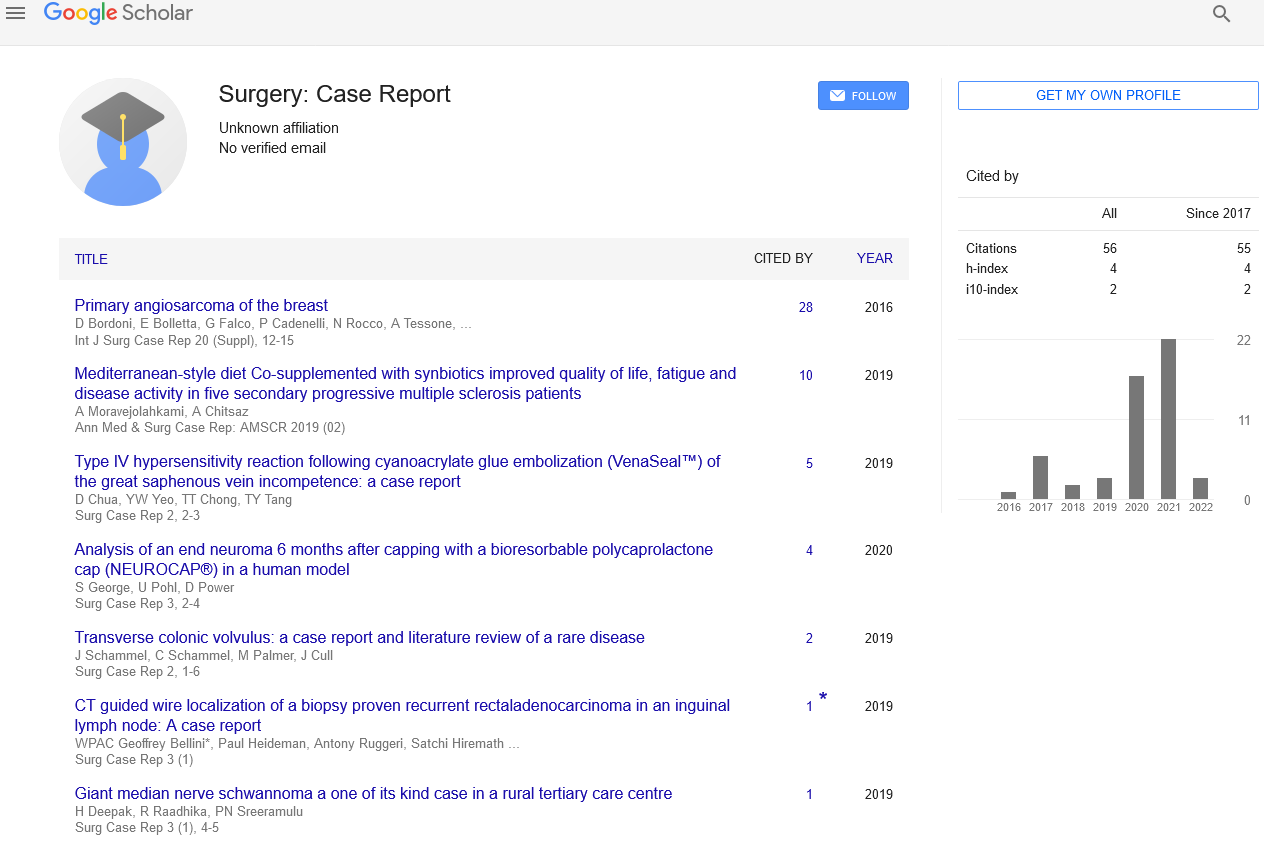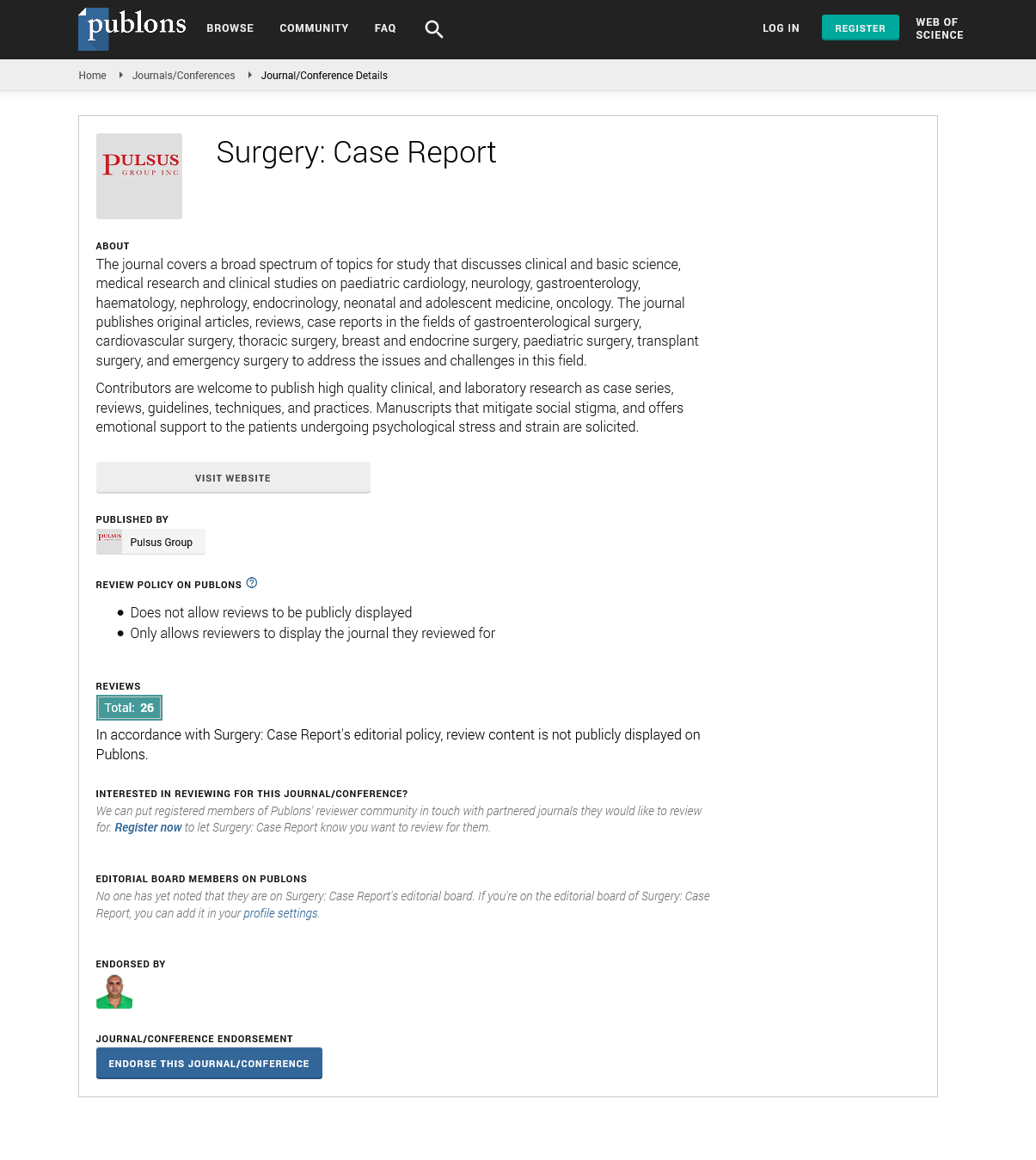Emerging Role of Robotics in Skull Base Surgery
Received: 07-Jul-2021 Accepted Date: Jul 18, 2021; Published: 27-Jul-2021
Citation: Ajit SL. Emerging Role of Robotics in Skull Base Surgery. Surg Case Rep. 2021; 5(4):4.
This open-access article is distributed under the terms of the Creative Commons Attribution Non-Commercial License (CC BY-NC) (http://creativecommons.org/licenses/by-nc/4.0/), which permits reuse, distribution and reproduction of the article, provided that the original work is properly cited and the reuse is restricted to noncommercial purposes. For commercial reuse, contact reprints@pulsus.com
Editorial
Since the development of the da Vinci robotic system in early 2000s, robotic surgery now has a substantial influence on a variety of surgical specialties and has achieved widespread use. Transoral robotic surgery (TORS) of the oropharynx and hypopharynx is already embraced by surgeons, and methods for laryngectomy, parapharyngeal space tumours, and neck dissections have indeed been published. TORS techniques, relative to conventional operations, allow for less invasive surgical methods, improved visibility of key structures, and quicker procedures. TORS also was found to improve postoperative swallowing, recovery period and less hospital stays as compared to conventional surgeries.
Furthermore, postsurgical discomfort and swallowing have all eased with robotic thyroid operations. Although initial success in many other regions of the head and neck, the robotic surgery as in anterior and central skull base has remained restricted. Numerous surgical robots were converted to be used in skull base surgery, none of which are currently marketed or developed with the skull base in mind. Due to disparity within size as well as agility of existing robotic devices or the narrow constraints of anterior skull base, this must have caused limitations. Nonetheless, using present robotics, various techniques were examined in cadaveric and human investigations.
Robotic-assisted skull base surgery with da Vinci provides better threedimensional vision than endoscopy. This might be enough to enhance surgical accuracy. The versatility of the da Vinci endowrist is higher than that of the human hand, allowing for better movement around slanted bony structures. Suture repair of dura is also achievable thanks to the Da Vinci robotic arms’ improved precise motor control. Traditional transnasal endoscopic surgery can cause tiredness and tremor, which can be eliminated with robotic surgery.
Instrument and endoscope conflicts are common in endoscopic skull base procedures because of the limited surgical passageways. Alternative robotic techniques with wristed instrumentation could be able to mitigate this. The surgeon’s console, which is ergonomically built, also incorporates monitoring of all of the robotic arms, giving the surgeon total control over the camera and three operating tools. Lastly, the latest da Vinci machines include multiple consoles that enables for smooth transfer of tasks to a second surgeon or student training.
Major disadvantage is the scarcity of equipment built specifically for sensitive skull base operations. A drill for skull base bone work is not included in the equipment contained in commercially authorized devices. A direct access through a transnasal route is presently unfeasible due to these design restrictions.
Furthermore, the robotics that is now accessible doesn’t really enable integration with image guiding systems. The shortage of tactile feedback for da Vinci equipment touch can be problematic, particularly when dealing with the fragile structure of the skull base, but this could be mitigated by the robot’s excellent three-dimensional optics. Most of these constraints may be overcome by forthcoming robotics such as concentric tube robots. There hasn’t been a cost benefit analysis study of robotic head and neck surgery vs. conventional techniques.
Overall expense of robotic surgery is typically greater due to surgical equipment and operating room expenditures, according to publications from other specialties. It needs to be seen if these expenditures are offset by lower risk of complications, faster recovery times, and better oncologic management. Moreover, like any new tech, there seems to be a steep learning curve, particularly for surgeons who might not be experienced with robotics. The need of appropriate training and competency prior to clinical usage cannot be overstated.
Clinical studies is limited thus far, but they are critical in demonstrating that robotic operations can be performed effectively and deliver demonstrable improvements in patient outcomes and patient satisfaction to support their higher costs. Long-distance telesurgery is indeed a potential for robotic surgery, however its use in otolaryngology is already restricted.
TORS has had a significant influence on head and neck surgery, however robotic skull base surgery is still in its early stages. Despite numerous methods have demonstrated effective accessibility to the anterior skull base, such techniques are essentially constrained by systems that were never meant to negotiate the complex, fragile anatomy of the skull base. These restrictions are expected to be solved in the coming times with the advancement of particularly built robotic systems; however cost, safety, and patient outcomes must all be taken into account when determining whether or not they should be used.






